It has taken years, but finally, Supermicro has “STH” series motherboards. As part of the latest Intel Xeon E-2300 series launch, the company has rolled out four standard 1U rack servers, a pedestal server, two MicroCloud offerings, and two MicroBlade nodes. Perhaps the most exciting part of the new massive lineup: of the nine motherboards, three are X12STH motherboards.
Since Supermicro has such a large portfolio, we are going to discuss the big buckets of systems rather than going too deep into each one. Hopefully, we will have a system (and an X12STH motherboard) review in the not too distant future.
Supermicro Intel Xeon E-2300 Series 1U Servers
Supermicro has four new servers based on the Intel Xeon E-2300 series. The Supermicro SYS-510T-WTR is the company’s WIO offering and is based on the X12STW-TF motherboard. WIO allows for either a double-width PCIe Gen4 x16 card (like a GPU) or two x8 cards. This is in addition to the center PCIe Gen3 x8 low profile card. WIO motherboards and systems are specifically designed to allow for this extra expandability in 1U.
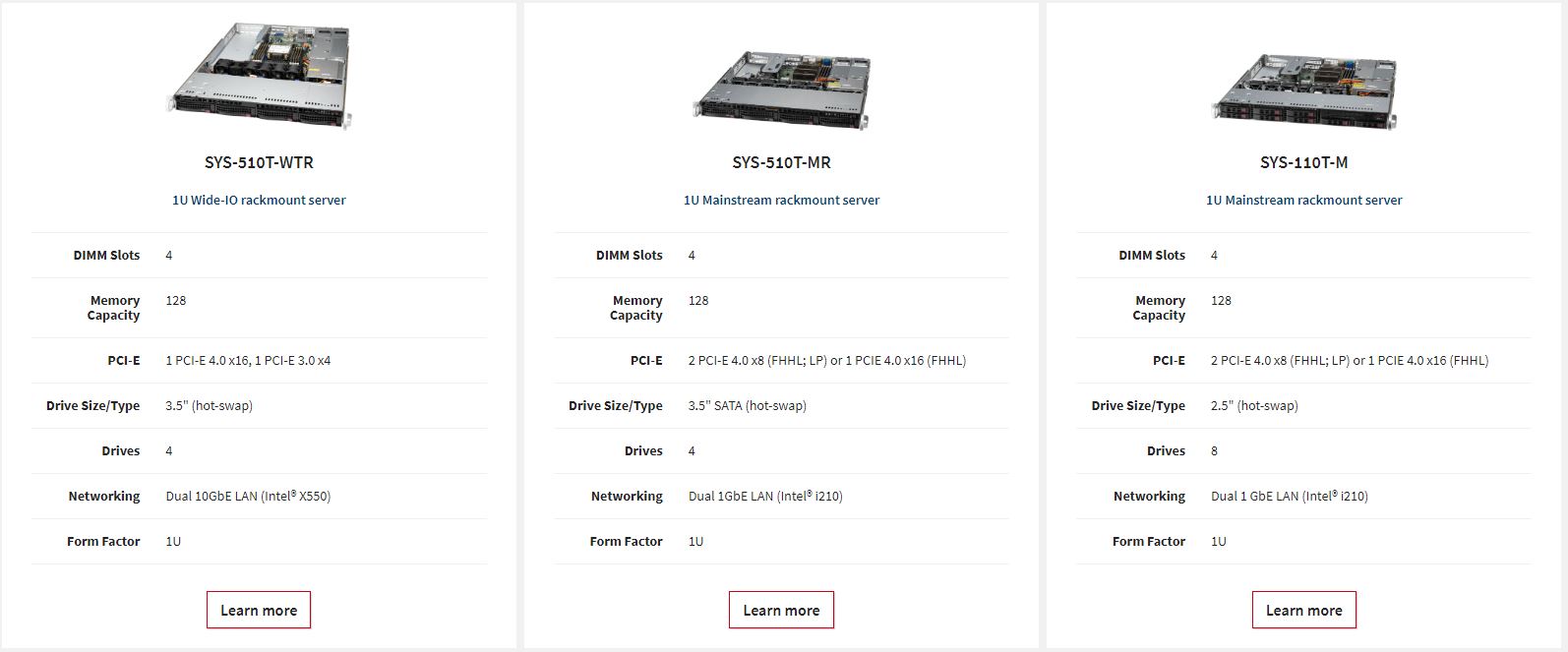
The Supermicro SYS-510T-MR and SYS-110T-M both utilize the Supermicro X12STH-SYS motherboard and are 1U systems with redundant power supplies. The SYS-510T-MR has four 3.5″ drive bays and the SYS-110T-M has eight 2.5″ bays. One of the really interesting features with these is that because Supermicro is using the X12STH-SYS, it can have an internal HBA card slot in the systems even in non-WIO style servers.
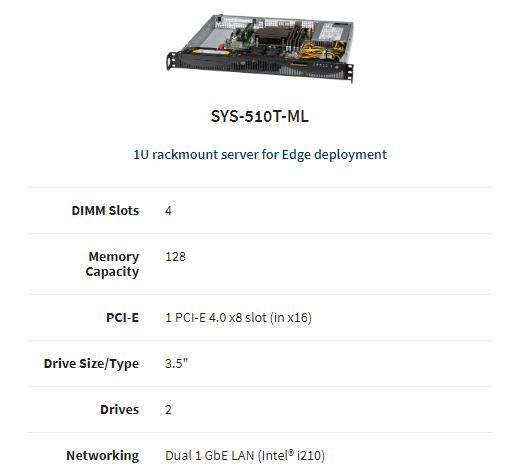
Finally, we have the SYS-510T-ML. This offering is based on the Supermicro X12STL-F and is in Supermicro’s shorter CSE-512 series chassis. Although one loses hot-swap bays and some PCIe expansion capabilities, this is also a 14.5″ deep or 368mm deep system designed for short-depth edge racks.
Supermicro Intel Xeon E-2300 Series Pedestal Server
For edge deployments where racks are not available, Supermicro has the SYS-530T-I. This is a mid-tower pedestal server built around the Supermicro CSE-731I series tower chassis.
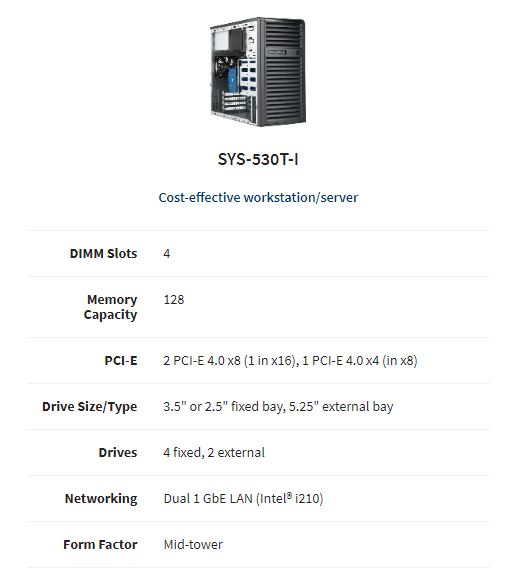
We have had a number of these mid-tower systems dating back several entry Xeon generations. This is built on the Supermicro X12STL-F motherboard like the SYS-510T-ML which means one can pick the rack or tower form factor and use the same motherboard and firmware.
Supermicro Intel Xeon E-2300 Series MicroCloud Servers
Supermicro MicroCloud is the only major line we have not reviewed from Supermicro at STH. The basic idea behind MicroCloud is that companies, often for web hosting, can use a shared chassis for power and cooling and then have individual nodes. In a 3U chassis one either gets 12 (H12TRF) or 8 (H8TNR) nodes which are denser than deploying 1U systems.
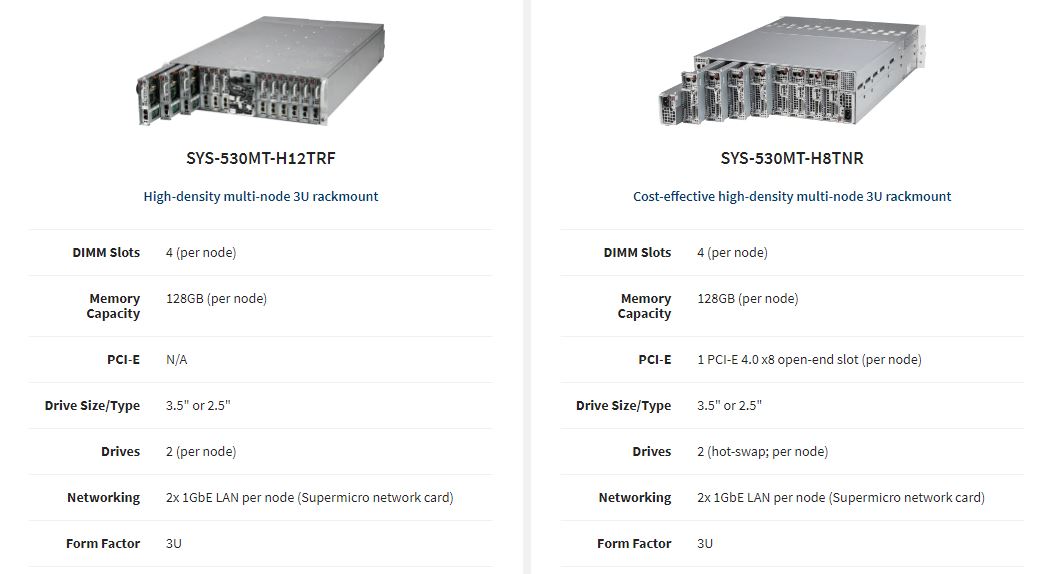
While these two systems may look similar with features such as shared power, cooling, and even a shared IPMI port option, they are quite different. The Supermicro SYS-530MT-H12TRF is designed for all-out density. One gets 12 nodes in a 3U server with only 29.5″ (749.3mm) of depth. A sacrifice for this density is hot-swap bay capabilities. This system is designed to have nodes pulled and serviced individually, including for storage. In contrast, the Supermicro SYS-530MT-H8TNR packs only eight systems into 3U, but it has two 3.5″ hot-swap bays (16 total) in the system. One gets 8 nodes in a 3U server with only 23″ (585mm) of depth.
These are MicroCloud solutions that are sometimes confused with the MicroBlade. Unlike the MicroBlade, networking is exposed to the rear of the system and there are no internal switches as one would typically find on blade platforms.
Supermicro Intel Xeon E-2300 Series MicroBlade Nodes
The MicroBlade platform with the new Xeon E-2300 series is the MBS-314E-310T. For that platform, there are two nodes the MBI-310T-4C2 and MBI-310T-4T2N.
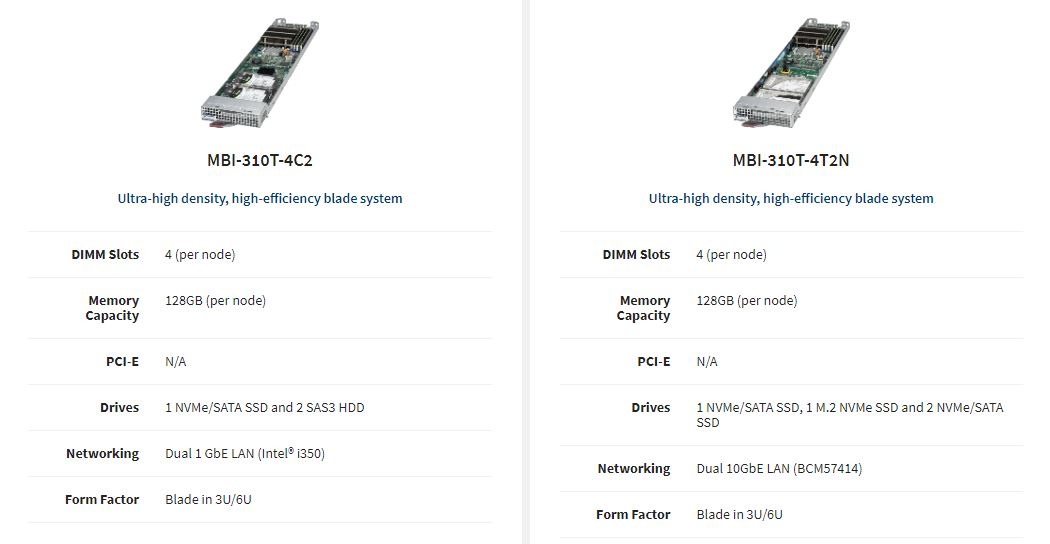
Of the two the MBI-310T-4T2N is the higher-end offering with dual 10GbE to pair with the 10GbE backplanes and switches one can get in the MicroBlade platform.
Supermicro Intel Xeon E-2300 Series Motherboards
Now onto the most exciting announcement, for us at least. After over a decade of reviewing motherboards in this class for Supermicro, there is finally a X12 STH series that has a total of three motherboards.
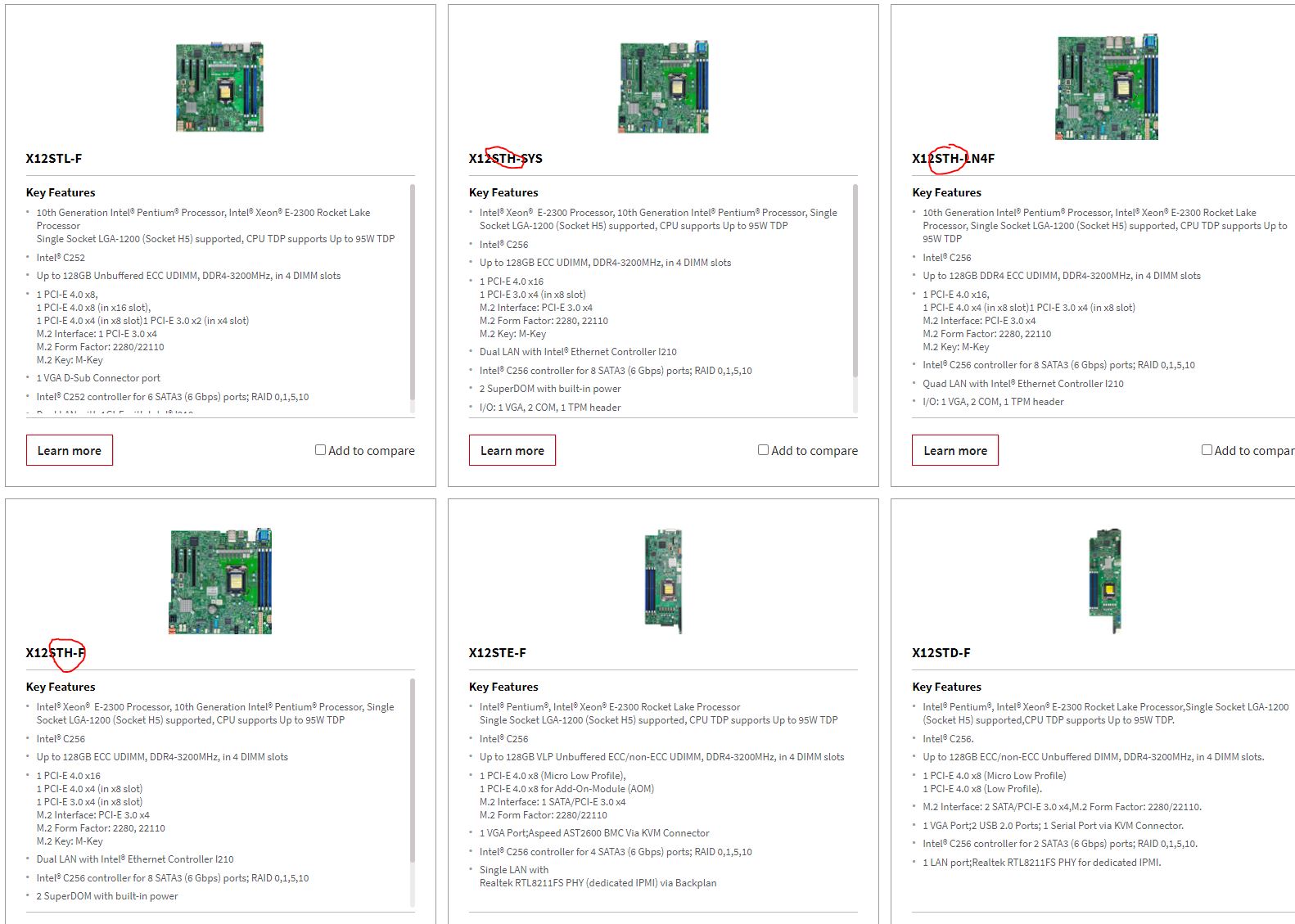
Supermicro X12STH Motherboards
Here are the specs for each. We already looked at the X12STH-SYS above where there is a PCIe expansion slot at the edge of the motherboard allowing for an internal PCIe slot. For more standard PCIe configurations, there is the Supermicro X12STH-F and X12STH-LN4F motherboards.
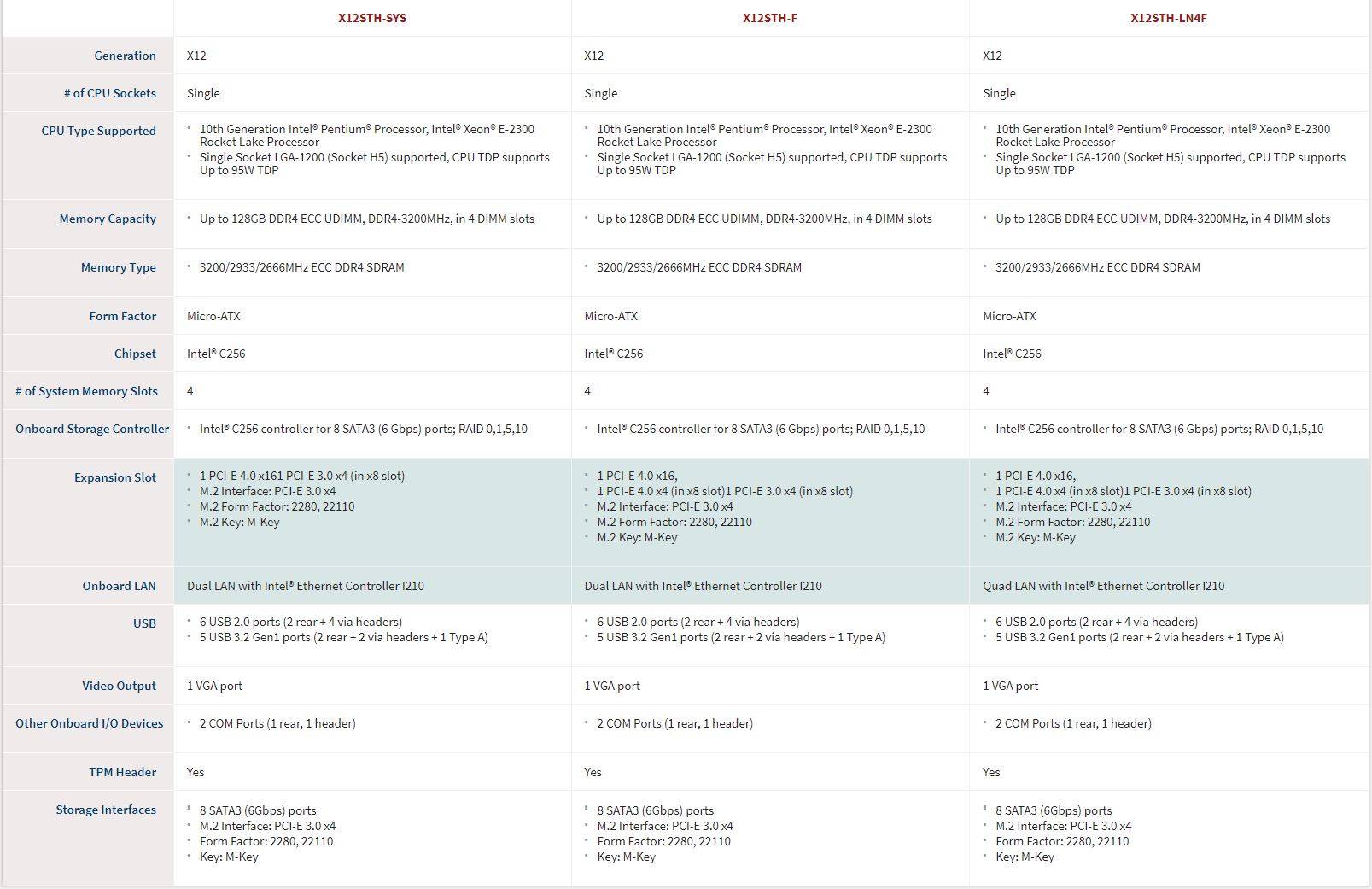
These are mATX motherboards. The -LN4F suffix means that we get quad 1GbE via four Intel i210 NICs. The X12STH-F means that we get a standard two 1GbE plus the dedicated management port setup. All three of the X12STH motherboards use the higher-end Intel C256 chipset and that allows for full PCIe and SATA expandability.
Supermicro X12STL Motherboards
For the more cost-optimized segments, we get the Intel C252-based X12STL-IF and X12STL-F motherboards. Although these may sound similar, there is a major difference. The X12STL-F is a standard mATX form factor. On the other side, the X12STL-IF is a mITX form factor.
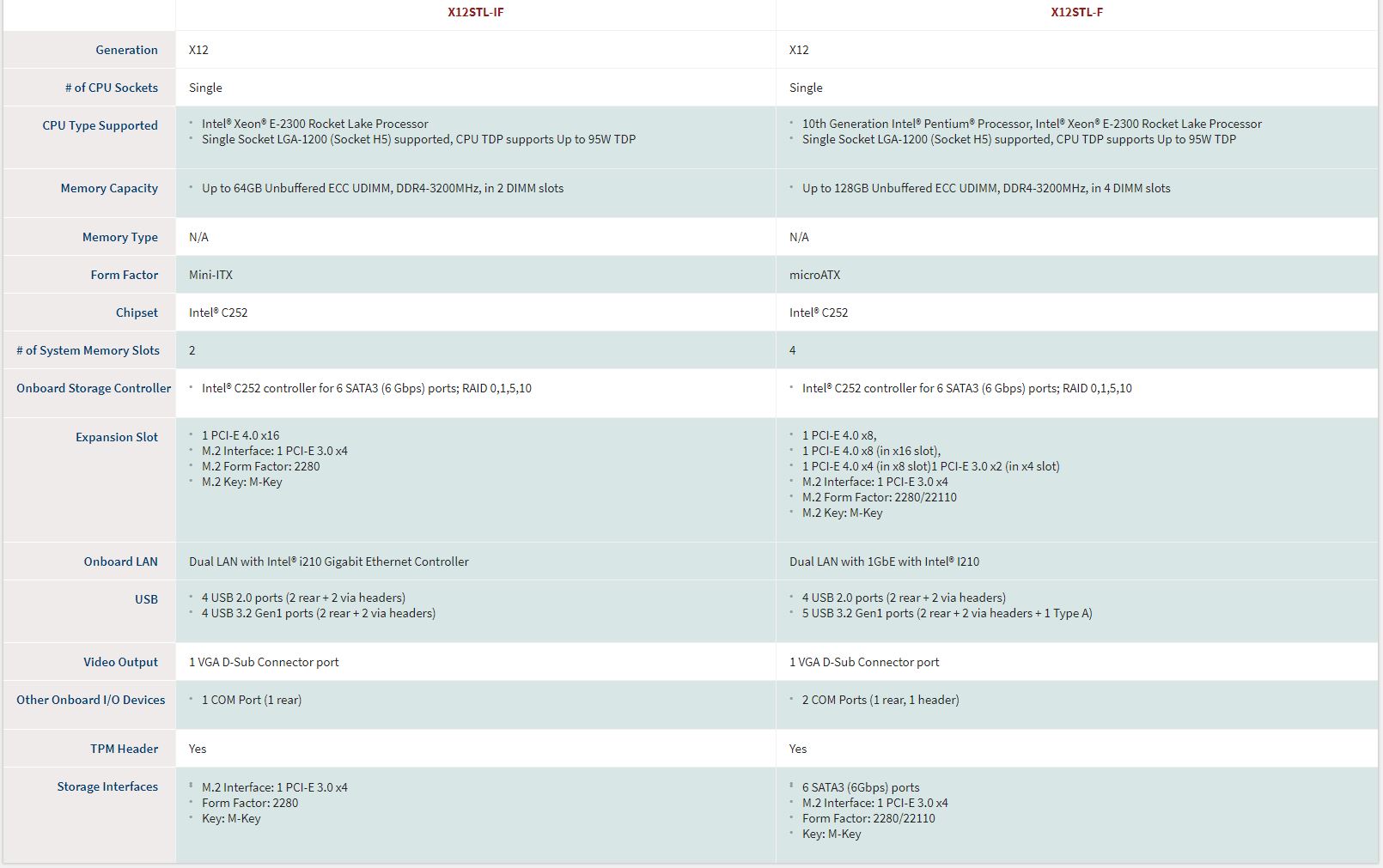
For our readers, that “i” is going to be very important to make the distinction as physical dimensions often dictate the chassis that can be used.
Supermicro X12STW Motherboards
The two Supermicro X12STW motherboards are the company’s WIO offerings. We noted the WIO servers above. The X12STW-TF has dual onboard 10Gbase-T via the Intel X550 while the X12STW-F is focused on onboard 1GbE.
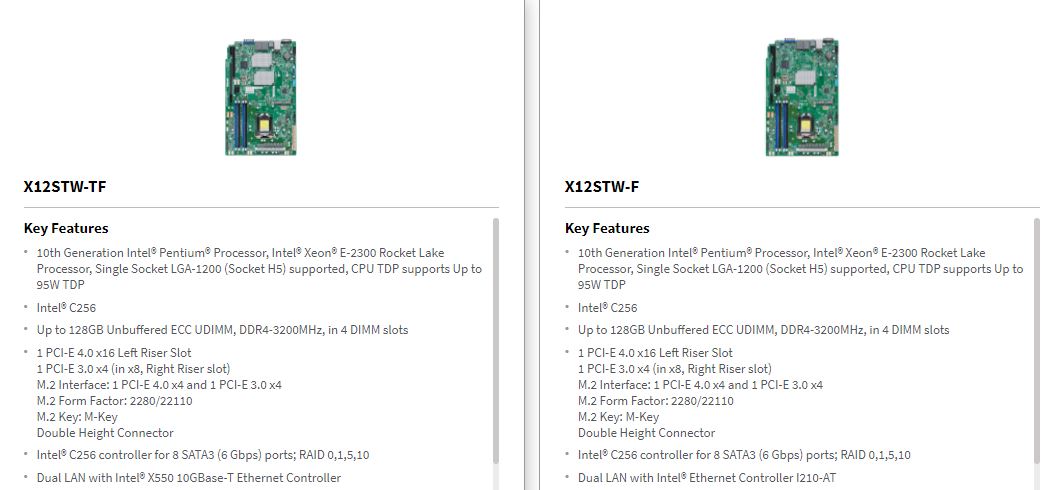
Generally, one would want to pair these with a Supermicro WIO chassis to make full use of the motherboard’s physical layout.
Higher Density MicroCloud X12ST Motherboards
We wanted to quickly note that Supermicro showed two motherboards from its MicroCloud units as part of its launch motherboard portfolio.
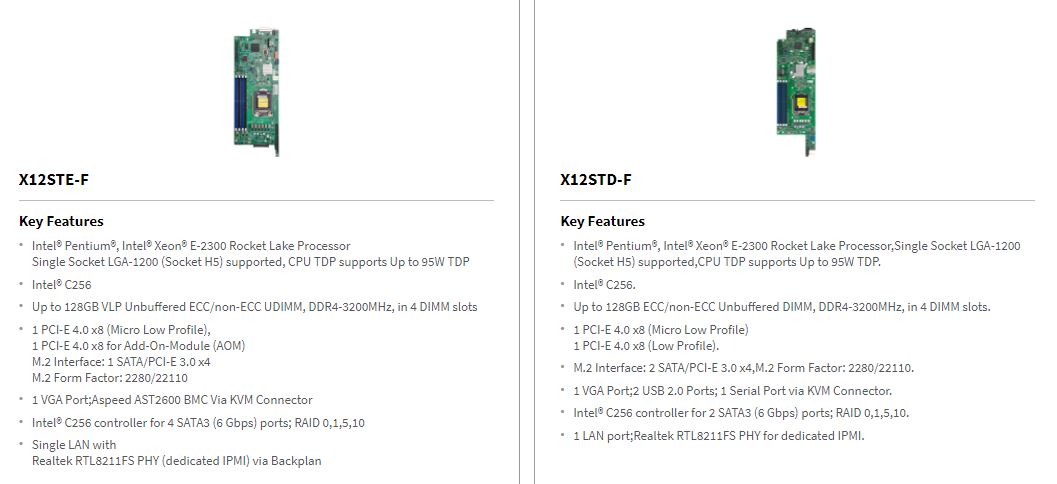
Supermicro pairs the X12STE-F with the 12-node in 3U SYS-530MT-H12TRF we discussed above. For the 8-node 3U SYS-530MT-H8TNR, we get the X12STD-F.
Final Words
It has taken many years, but Supermicro finally has a STH offering. For those wondering, this is just a part of Supermicro’s naming convention that yielded this result. S is for single socket, and T is for this entry Xeon generation. Still, it is a bit fun to see and we clearly need to do a X12STH-LN4F review at this point. Thank goodness the X12STH line is the more premium C256 line over the C252 line.
Overall, Supermicro has a lot of new gear that came out. Hopefully, this helps you at least understand how all of the announced pieces fit together and a bit more about the markets they target.

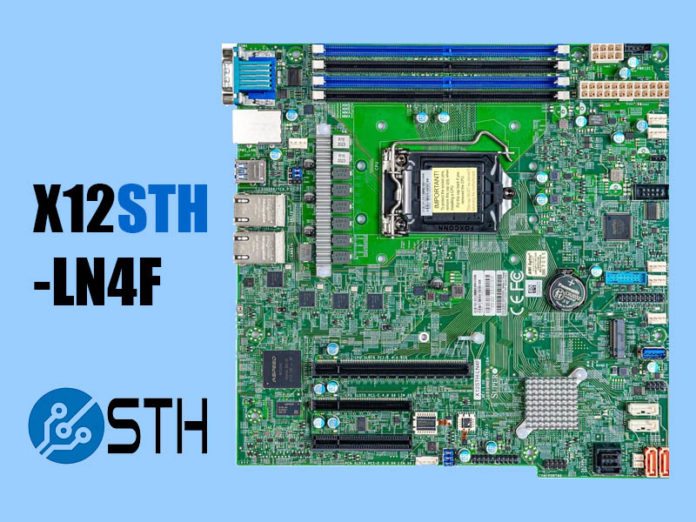
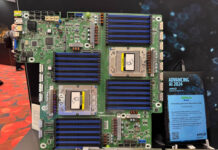
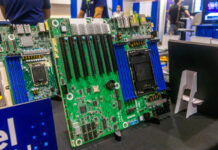

Can we get the next STH or even this generation STH variant be one that Patrick designs and have a real STH line? STH is like the go-to place for these motherboards since I’ve been doing servers. I’d get our people to buy a “X12STH-STHF” if it supported you.
It’s nice to have someone explain the spew of new products with some organization.
I’d buy a STH edition only if STH had input in it. It’s a dick move to use STH if you haven’t designed it. Your X9SCM-F and all of those reviews since are why I stopped buying Dell for the office. Ok let’s get trendy and say the ‘edge’
They have “PAT” too, it’s an “Asset Tag”.
Source: https://www.supermicro.com/support/faqs/faq.cfm?faq=15869
I’m +1’ing the Patrick makes a STH E-2300 motherboard.
Congratulations Patrick on the new STH mainboards!
SM really dropped the ball with this lineup. Only a single board with anything greater than 1gb networking and its a custom size.
Does the SuperServer SYS-510T-WTR really have NVME support for the front drive bays?
The spec sheet says “4x 3.5″ NVMe/SATA drive bays (4x 3.5″ NVMe hybrid)” but all the pictures only say “SATA/SAS”. Of course a manual is not available yet.
I’d love to be able to order cheap Xeon E servers with decent U.2 drives. I’ve used M.2->U.2 adapters on X11/H12 with no problems but being able to order a complete server without having to take it apart and resort to third party adapters would be a plus.
I would buy an X12STH-STFU.